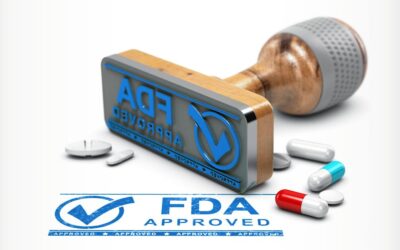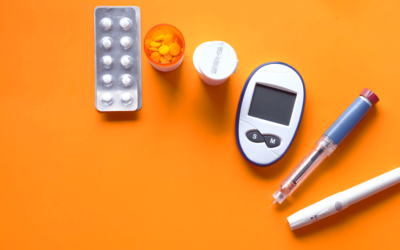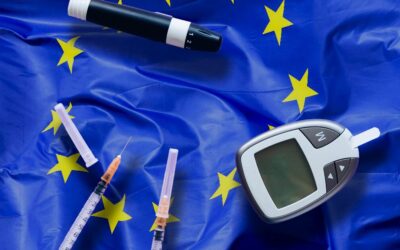Latest News
FDA Recognizes ISO 10993:17
The FDA has just recognized the recently updated ISO 10993 Part 17 standard covering the toxicological risk assessment of medical device constituents. Apart from a few exceptions, the FDA recognized the standard for its relevance and scientific and technical merit.
ISO 10993-17:2023 introduces some new concepts for toxicological risk assessments, such as toxicological screening limits (TSLs) and maximum estimated exposure dose (EEDmax), which will improve accuracy and reliability. These significant changes impact medical device manufacturers when preparing to introduce or update products.
As our CTO, Carsten Baun Senholt, is a member of the international technical committee TC 194, which designed the new standard, we are well positioned to offer fully compliant, certified QMS and toxicological risk assessments.
Read more about how we can help you with ISO 10993-17 compliance:
Biological Evaluation Report
Safely Manage Change
Nitrosamine Impurities in Primary Packaging
Pharmaceutical manufacturers need to know whether their products contain nitrosamine impurities and, if so, whether they are below the thresholds established by various regulatory agencies.
Nitrosamines are highly toxic compounds, with some considered even more carcinogenic than currently established thresholds suggest and are, therefore, subject to strict regulations in both the EU and the US.
The introduction of nitrosamine impurities can occur at any stage of the supply chain, from raw material processing to the manufacturing process to appearing as leachables from packaging and storage.
The EMA and FDA are shifting their focus to packaging materials as a potential source of nitrosamine impurities. This shift in focus means that manufacturers need to know what is in their packaging materials, whether they can leach nitrosamines, and how to mitigate potential problems.
Our services, designed and run by our team of experts, can help you fill in the gaps in your supply chain information and assess your packaging and storage processes for the presence of nitrosamines.
Check out how we can help here.
New ECHA Chemicals Enforcement Project
The European Chemical Agency (ECHA) is launching a project to check the compliance of products sold online with REACH and CLP requirements. Currently, chemical products sold online are largely non-compliant. Starting in 2025, ECHA inspectors will check products sold online for compliance and, thanks to stricter rules governing online sales, have enhanced enforcement mechanisms.
Are you sure the products you sell online are ready for the upcoming stricter inspections? According to the ECHA, probably not, as they found that 78% of tested mixtures and articles sold online were non-compliant.
We can help you ensure that your products comply with the new regulations, allowing you to continue to sell online without interruption.
Read more about how we can help her.
ISO 10993-17 Development
We are very proud that our CTO, Carsten Senholt, has a central role in the international writing group developing ISO 10993-17, which was recently submitted as a final draft.
The ISO 10993 series is a suite of standards covering the biological evaluation of medical devices. The newly revised part 17 now covers the toxicological risk assessment of medical device constituents.
This work started over seven years ago and, compared to the 2002 edition, is a fundamental update on how to conduct toxicological risk assessments of medical devices.
We have already implemented this new approach into our processes via our ISO 13485-certified quality management system.
We can help you keep up with the changing world of medical device guidelines.
Read more about how we can help here.
Major Change: EU Can Classify Silicone as a Restricted Substance
Do you use silicone in the medical devices you produce? If so, you need to be aware that the European Chemicals Agency (ECHA) can now classify silicone oligomers, specifically D4, D5, and D6 siloxanes, as Persistent Bioaccumulative and Toxic substances (PBT), Very Persistent and Very Bioaccumulative substances (vPvB), and suspected to be toxic to human reproduction after a decisive ruling by the European Court of Justice.
Silicone oligomers are an unavoidable result of the production processes for silicone that must now be accounted for before a medical device containing silicone can be approved for sale in the EU.
At SAXOCON, we have the expertise to properly risk assess the silicone in your products to determine if it meets the new requirements. This ruling marks a change that has far-reaching consequences for new and existing products. Contact us to find out how we can help you determine how compliant your silicone products are.
We have several services to help risk assess your products, including:
Materials screening and selection
Surface characterisation
Device-drug safety
Updated ISO 10993-17:2023 Standard
The ISO 10993 standard series covers the biological evaluation of medical devices. Part 17 of this series addresses the toxicological risk of chemical constituents resulting from the chemical characterization of medical devices. In its first major revision in 20 years, the new ISO 10993-17:2023 was published on 13 September. This update has consequences for all medical device manufacturers who must comply with the new requirements.
ISO 10993-17:2023 introduces some new concepts for toxicological risk assessments, such as toxicological screening limits (TSLs) and maximum estimated exposure dose (EEDmax), which will improve accuracy and reliability. These major changes will impact medical device manufacturers when they prepare to introduce or update products.
Our CTO, Carsten Baun Senholt, is a sitting member of the international technical committee TC 194, which designed the new standard. Therefore, our certified QMS and toxicological risk assessments are fully compliant.
Read more about how we can help you with ISO 10993-17 compliance:
Biological Evaluation Report
Safely Manage Change
Particulate Contamination
Particulate contamination is a risk in pharmaceutical production facilities. Good Manufacturing Practice (GMP) and proper risk management requires identifying root causes and evaluating what impact a particulate matter finding has on product safety. Understanding the risk as quickly as possible is crucial when deciding whether to release or recall affected product batches.
SAXOCON has the facilities, expertise, and experience to quickly assess, process, and mitigate any unexpected findings. We can test for particulate contamination according to ISO 8536, “Infusion equipment for medical use part 4: Infusion sets for single use, gravity feed, A.2 Test for particulate contamination”, with the ability to filter up to 20 samples and analyse 20 filters. Once testing is completed, we send a comprehensive report of the results.
Check out how SAXOCON can help here and here.
Medical Device QMS
The EU is conditionally extending the MDR deadline. Medical device manufacturers with certificates approved before 26 May 2021 can extend their validity if their products meet certain conditions, one of which is the establishment of an MDR-compliant Quality Management System (QMS).
As a company, SAXOCON is ISO 13485 certified. We also have BSI-certified ISO 13485 internal auditors who can help you implement your QMS, allowing you to keep your current certification and prepare for the upcoming changes to MDR.
Read more to see how we can help you navigate this complex regulatory maze.
Materials Screening
Medical device manufacturers need to screen the materials used in their products. Proper biosafety and sourcing require having full transparency about the physical and chemical information associated with the materials throughout the supply chain. Knowing what is in the materials you use helps mitigate risk, reduces unexpected findings, and keeps regulators happy.
To operate in the EU, medical device manufacturers must ensure the quality and safety of the materials used in their products before they can bring them to market. Early and robust materials selection helps meet regulatory requirements, mitigate risk, and get your products to market quickly.
SAXOCON has several services to help you understand your materials and get compliant with all relevant regulations:
Materials Screening
Primary Packaging Safety
Safe Drug-delivery Devices
Surface Characterisation
Safe Food Contact Materials
New FDA NDSRI Guidelines
The Food and Drug Administration (FDA) is updating its guidance regarding Nitrosamine Drug Substance-Related Impurities (NDSRIs). With this update, the FDA acknowledges the leading scientific research by introducing a novel framework for determining the Acceptable Intake (AI) of NDSRIs.
This updated guidance defines five NDSRI potency categories and establishes a framework for setting a scientifically relevant AI based on the compound-specific chemical structures of identified NDSRIs. Most interestingly, the agency recognizes that setting a fixed AI limit for the total level of a mix of different nitrosamine impurities may be impractical if the potency categories of the implicated NDSRIs vary greatly.
This guidance is for immediate implementation, and the agency recommends reevaluating the NDSRI risk in your products before November 2023.
SAXOCON provides toxicological risk assessments of NDSRIs that help your products meet agency expectations.
Check out how we can help here.
Nitrosamine Contamination
As a pharmaceutical manufacturer, you need to know whether your products contain nitrosamine impurities and, if so, whether they are below the thresholds established by various regulatory agencies.
Nitrosamine impurities can be introduced at any stage in the supply chain, during manufacturing, or as leachables from packaging and storage.
Nitrosamines are highly toxic compounds, and some are considered even more carcinogenic than currently established thresholds suggest and are subject to strict regulations in both the EU and the US.
At SAXOCON, we have the expertise and services to help you to fill in the gaps in your supply chain information, and test and assess your manufacturing, packaging, and storage processes for the presence of nitrosamines and how they impact your drug substances and products.
Check out how we can help here.
ISO 13485 and MDR
According to EU Regulation (EC) 2017/745 (MDR) and US 21 CFR 820 covering medical devices, manufacturers must demonstrate that their selected critical suppliers, contractors, and consultants meet all specified requirements, including quality requirements. These regulations hold manufacturers fully responsible for all outsourced processes. Fulfilling this obligation requires understanding and monitoring every aspect of the supply chain, including the materials used, the impacts manufacturing processes can have on final products, and whether any impurities found in the materials used can affect end users. The state-of-the-art for medical devices in the EU and US is to adhere to the ISO 13485:2016 quality management systems standard.
SAXOCON is an ISO 13485:2016 certified toxicological service supplier.
As a manufacturer, having confidence in your suppliers lets you focus on your manufacturing processes and getting your products approved and ready for market as quickly as possible. Since 2021, SAXOCON has been ISO 13485:2016 certified, allowing us to serve as a critical supplier of toxicological evaluation services. Our quality management system ensures we have the right resources, competencies, procedures, and processes to provide consistent and quality-controlled services. Using us as a supplier of high-quality toxicological services gives you peace of mind and one less thing to worry about at your next audit.
Obtaining ISO certification is not a one-off event; it requires regular audits by BSI. Therefore, we are committed to continually investing in developing and improving our quality management system.
Learn more about how our certified services can support your business here.
 Medical Devices
Medical Devices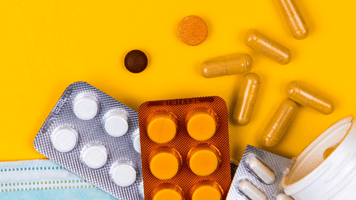 Pharmaceuticals
Pharmaceuticals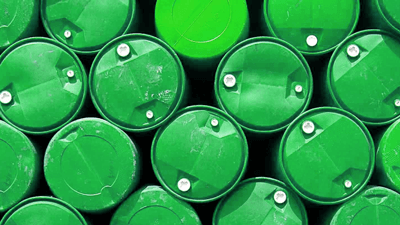 Chemicals
Chemicals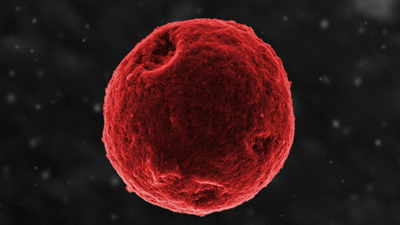 Analytics Services
Analytics Services Food Industry
Food Industry Cosmetics
Cosmetics